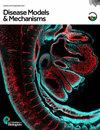Promoting mitochondrial dynamics by inhibiting the PINK1/PRKN pathway to relieve diabetic nephropathy.
IF 4
3区 医学
Q2 CELL BIOLOGY
引用次数: 0
Abstract
Diabetes is a metabolic disorder characterized by high blood glucose levels and is a leading cause of kidney disease. Diabetic nephropathy has been attributed to dysfunctional mitochondria. However, many questions remain about the exact mechanism. The structure, function, and molecular pathways between mammalian podocytes and Drosophila nephrocytes are highly conserved, therefore we used flies on a high-sucrose diet to model type 2 diabetic nephropathy. The nephrocytes of high-sucrose diet flies showed significant functional decline and decreased cell size, associated with a shortened lifespan. Structurally, the nephrocytes filtration structure known as the slit diaphragm was disorganized. At the cellular level, we found altered mitochondrial dynamics and dysfunction. Regulating mitochondrial dynamics by either genetic modification of the Pink1/Park (mammalian PINK1/PRKN) pathway or treatment with BGP-15, mitigated the mitochondrial defects and nephrocyte functional decline. These findings support a role for Pink1/Park-mediated mitophagy and associated control of mitochondrial dynamics, essential for function, in diabetic nephropathy; and demonstrate that targeting this pathway might provide therapeutic benefits in type 2 diabetic nephropathy.通过抑制 PINK1/PRKN 通路促进线粒体活力,缓解糖尿病肾病。
糖尿病是一种以高血糖为特征的代谢性疾病,也是导致肾病的主要原因。糖尿病肾病是线粒体功能失调所致。然而,关于其确切机制仍有许多疑问。哺乳动物荚膜细胞和果蝇肾小球之间的结构、功能和分子途径高度保守,因此我们用高蔗糖饮食的果蝇来模拟2型糖尿病肾病。高蔗糖饮食果蝇的肾小球显示出明显的功能衰退和细胞体积缩小,与寿命缩短有关。从结构上看,肾小球的过滤结构(即狭缝膈膜)被破坏。在细胞水平上,我们发现线粒体动力学发生了改变,并出现了功能障碍。通过基因修饰 Pink1/Park(哺乳动物 PINK1/PRKN)通路或使用 BGP-15 治疗来调节线粒体动力学,可以缓解线粒体缺陷和肾小球功能衰退。这些研究结果支持 Pink1/Park 介导的有丝分裂和线粒体动力学的相关控制在糖尿病肾病中的作用,而线粒体动力学对糖尿病肾病的功能至关重要;研究结果还证明,针对这一途径可能对 2 型糖尿病肾病有治疗效果。
本文章由计算机程序翻译,如有差异,请以英文原文为准。
求助全文
约1分钟内获得全文
求助全文
来源期刊

Disease Models & Mechanisms
医学-病理学
CiteScore
6.60
自引率
7.00%
发文量
203
审稿时长
6-12 weeks
期刊介绍:
Disease Models & Mechanisms (DMM) is an online Open Access journal focusing on the use of model systems to better understand, diagnose and treat human disease.
 求助内容:
求助内容: 应助结果提醒方式:
应助结果提醒方式:


